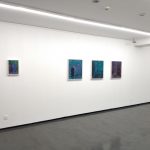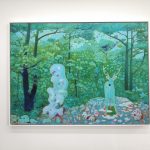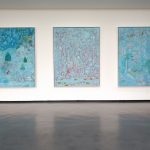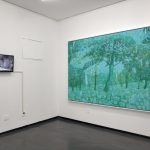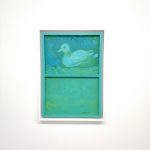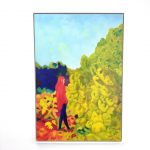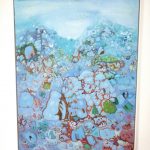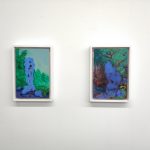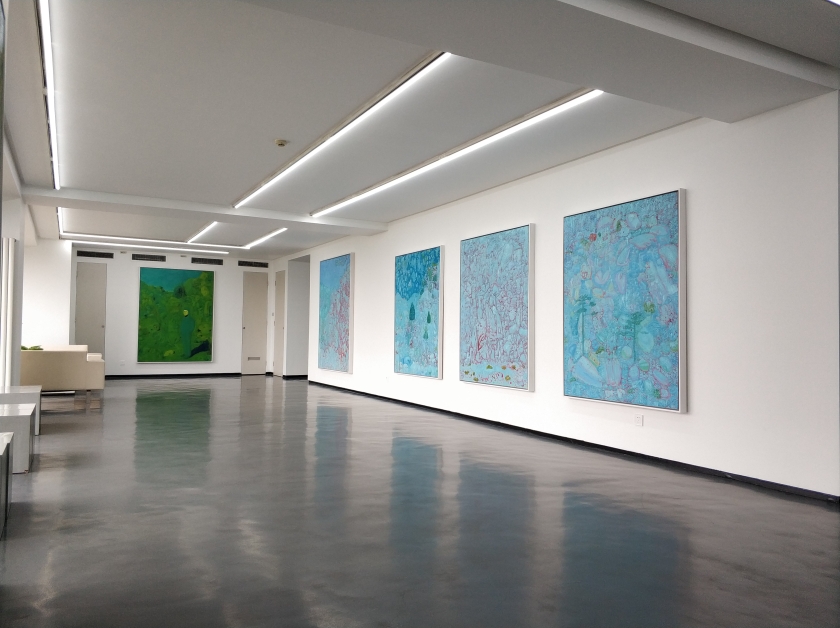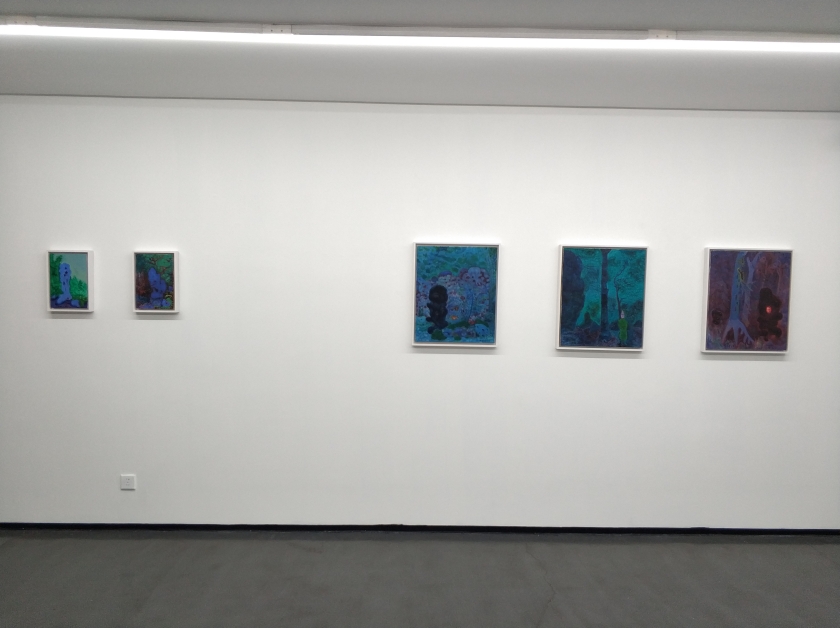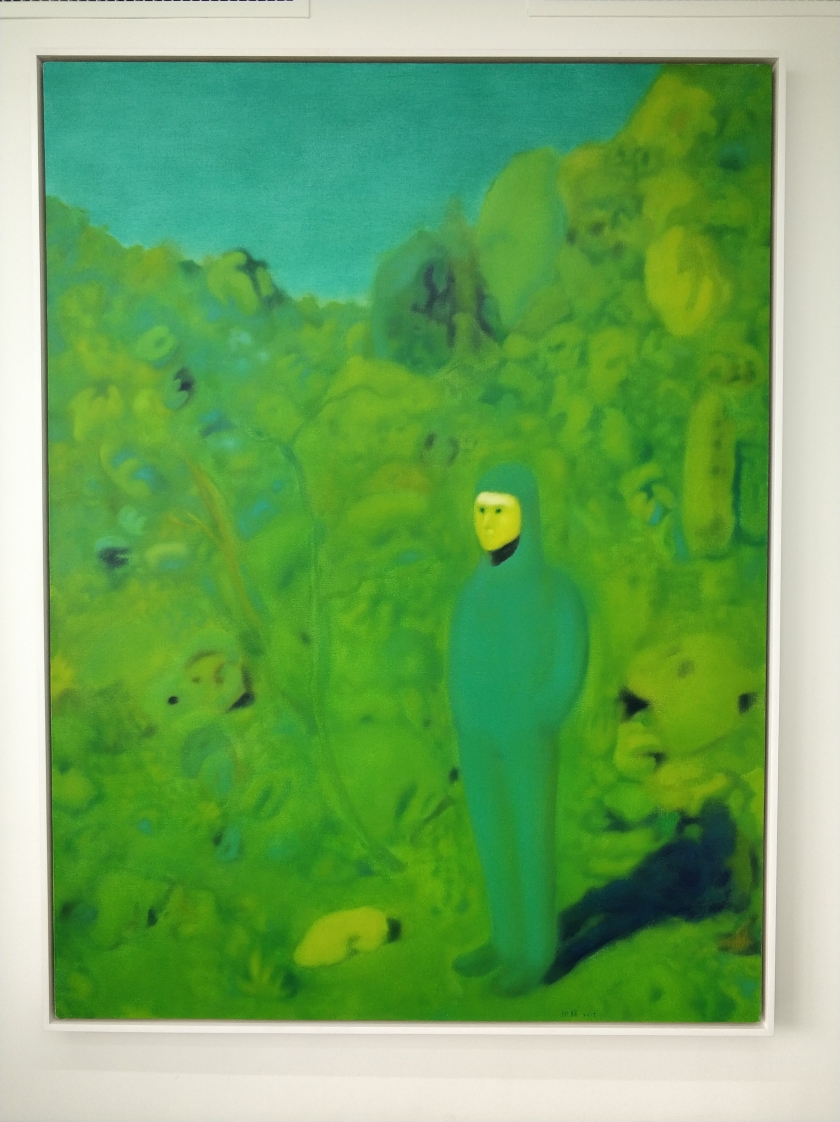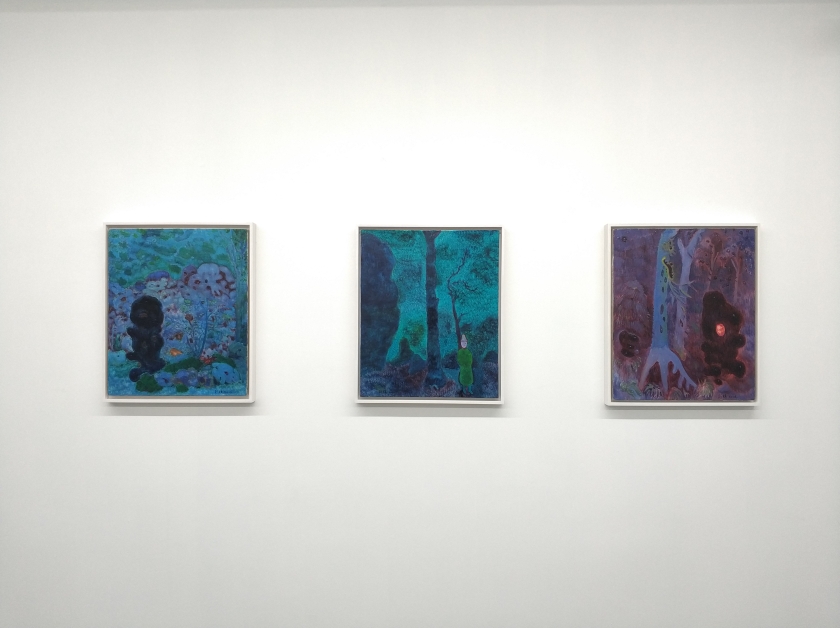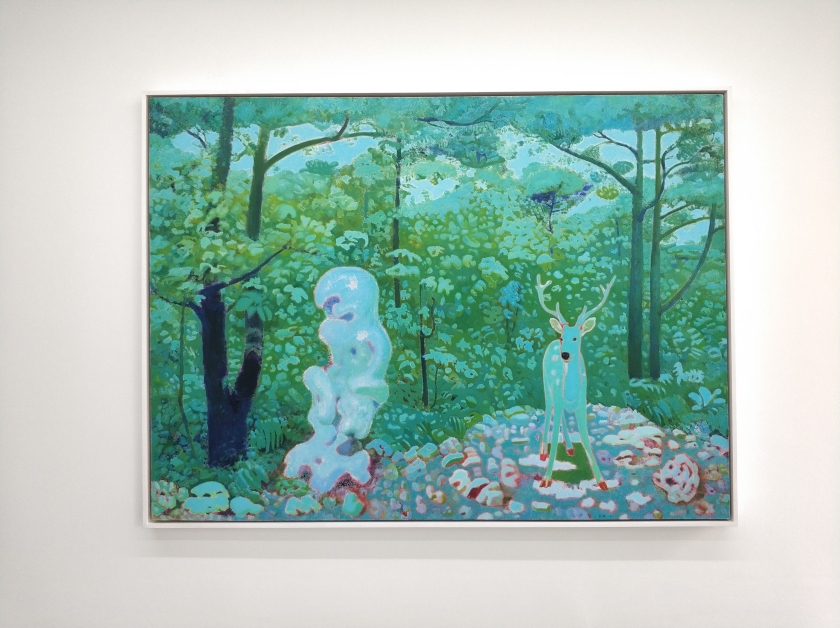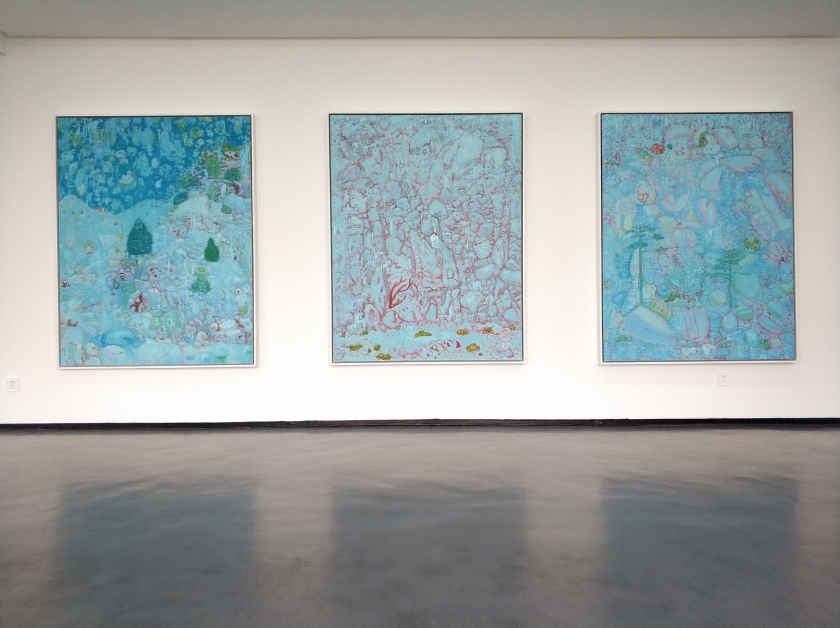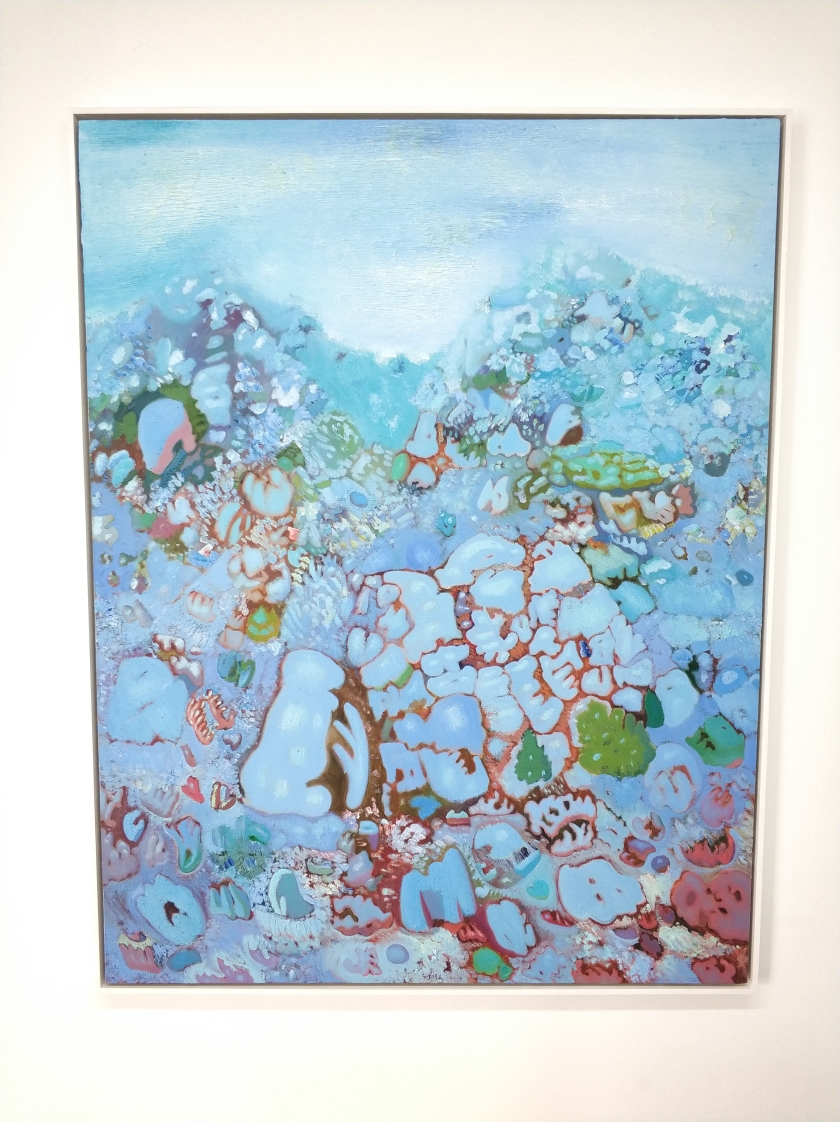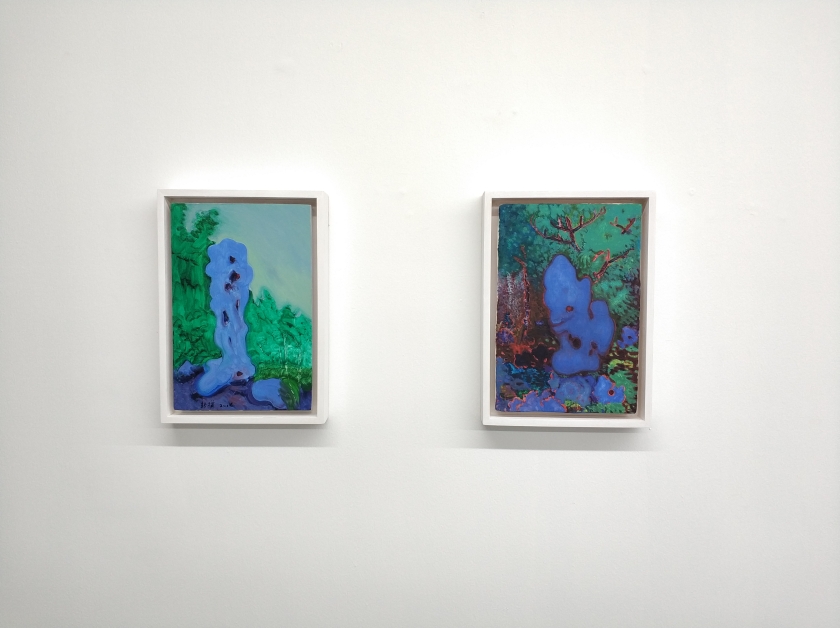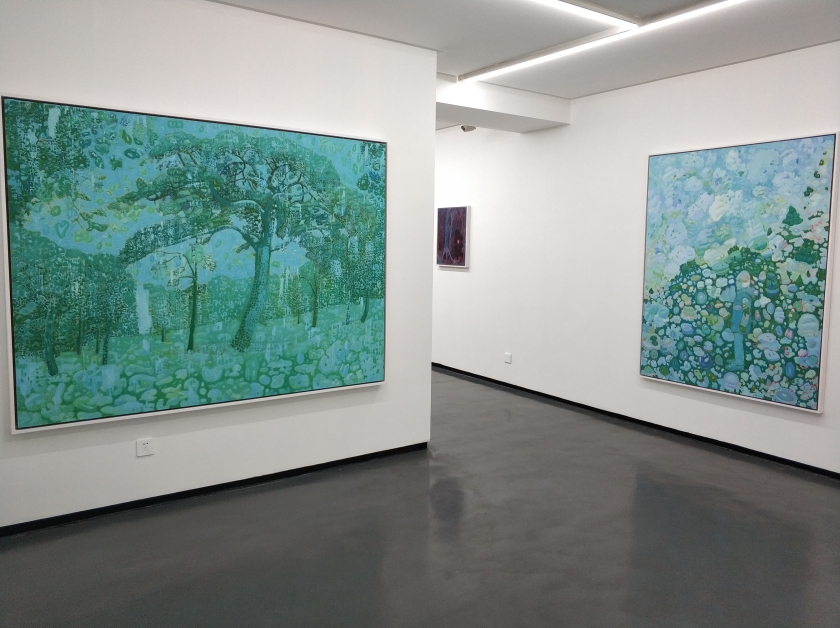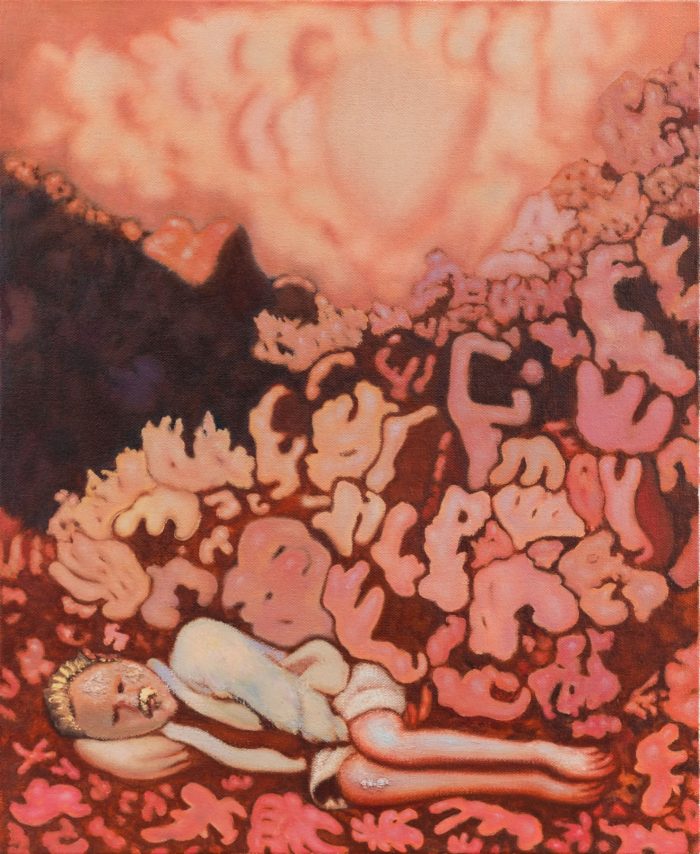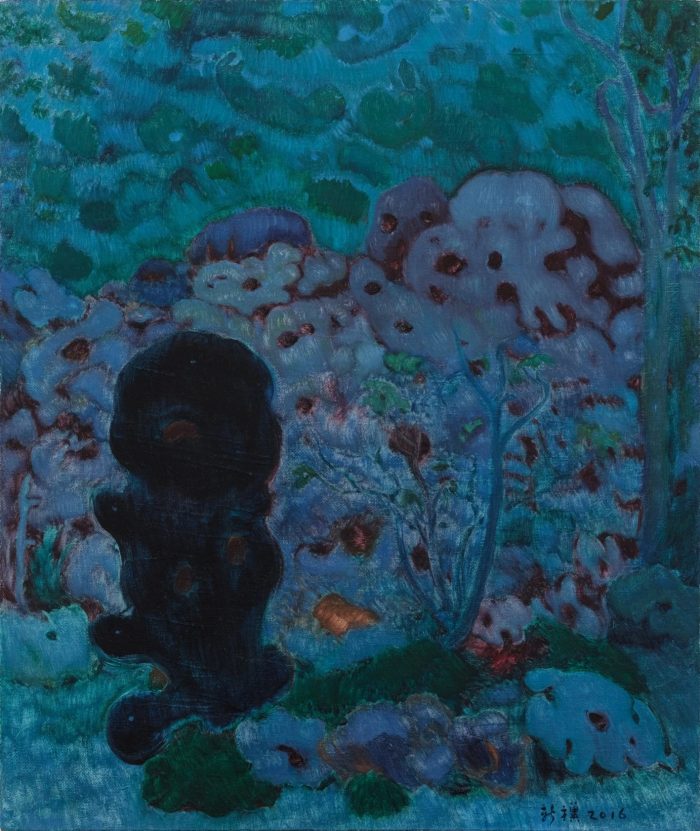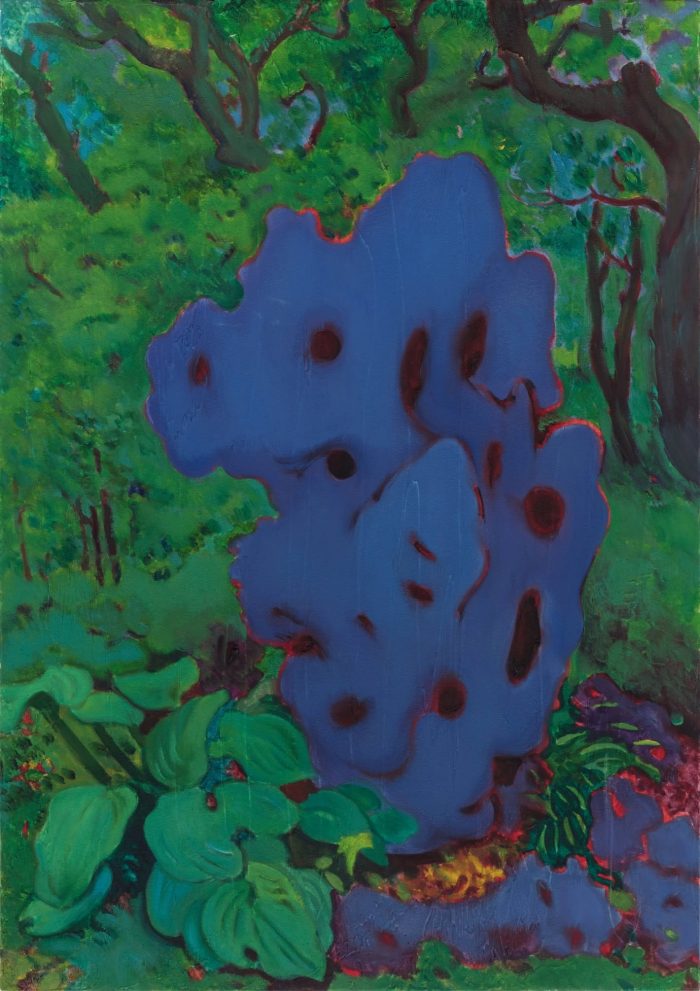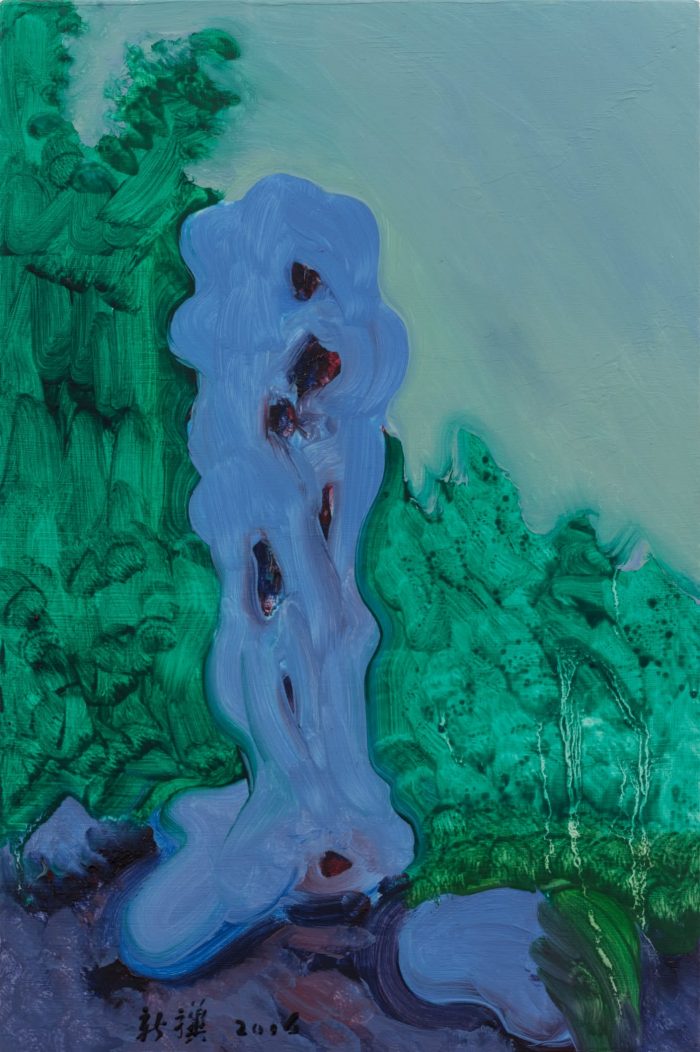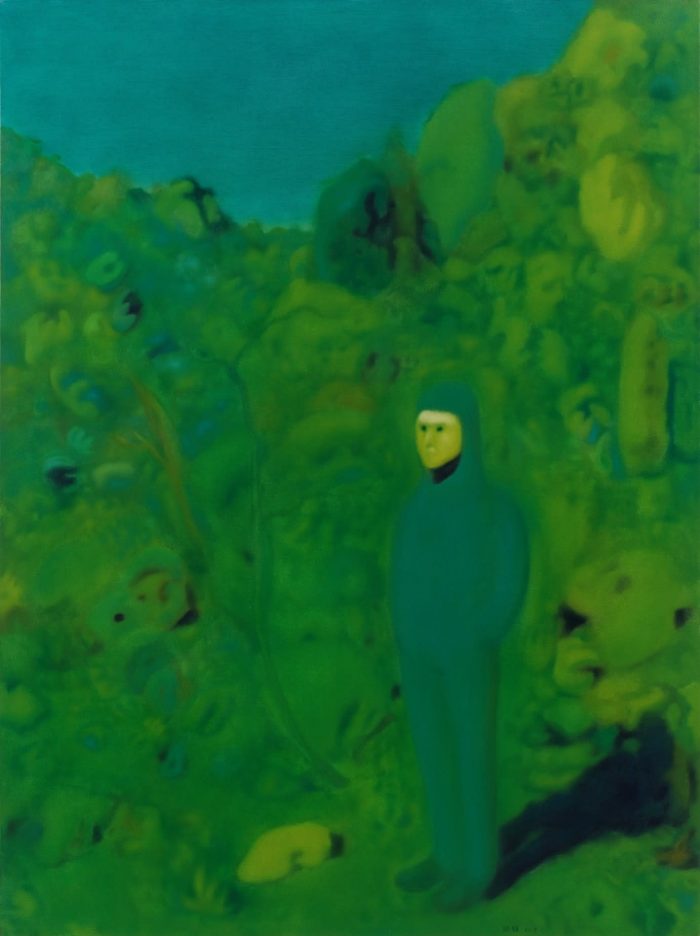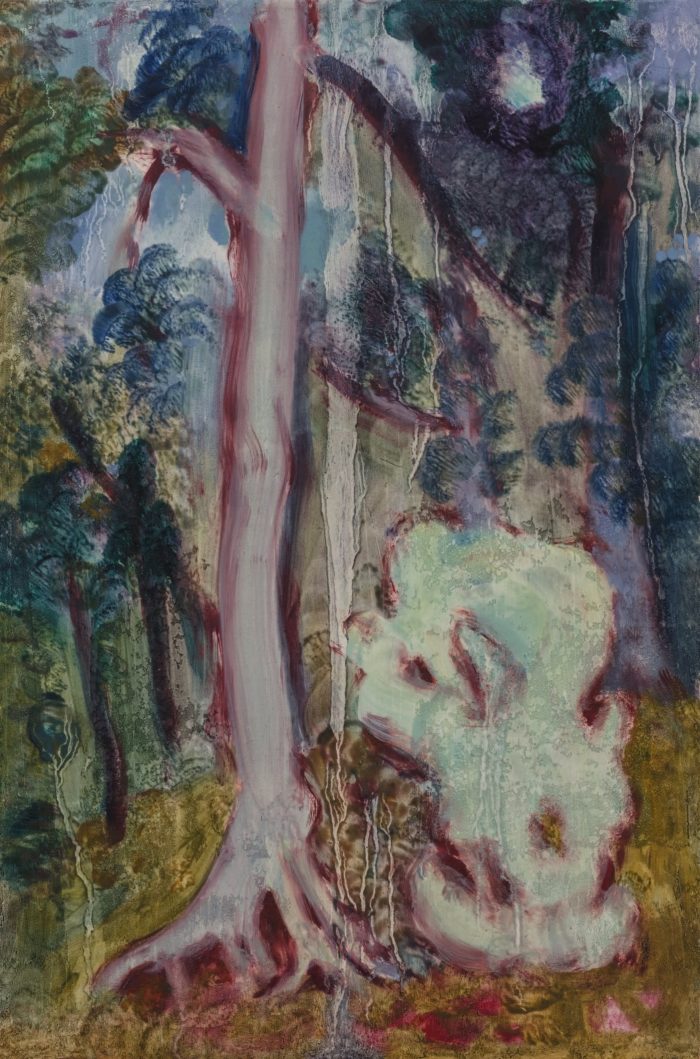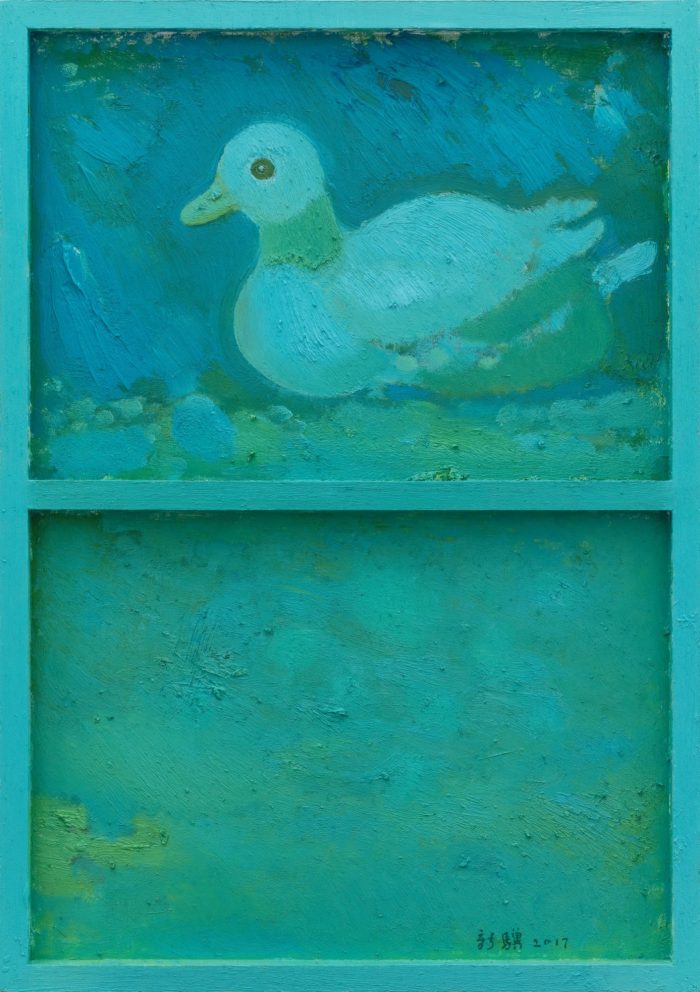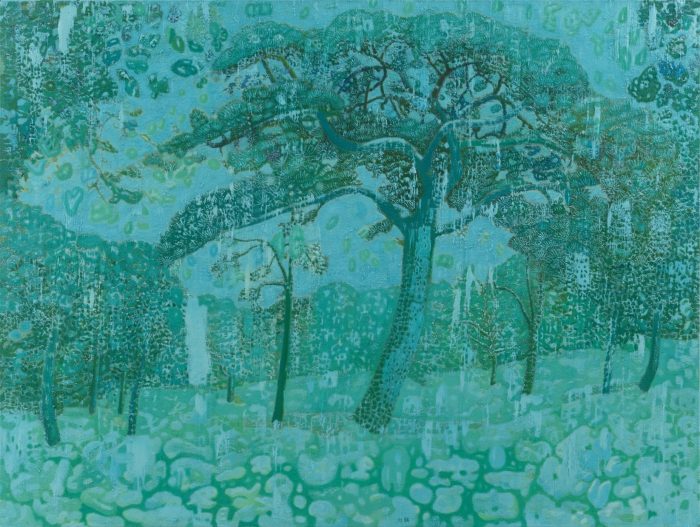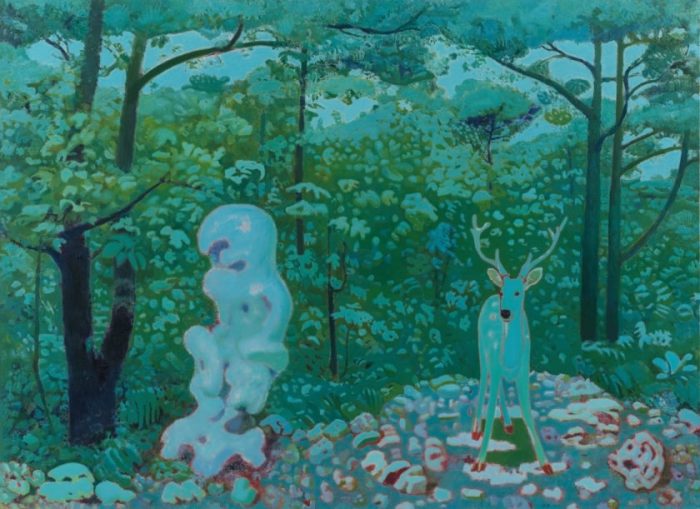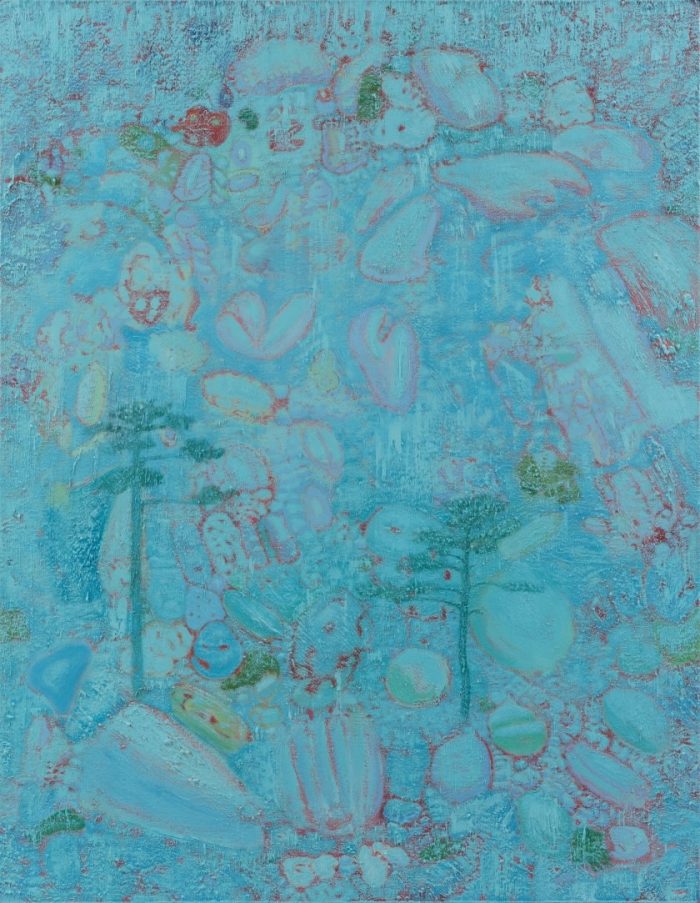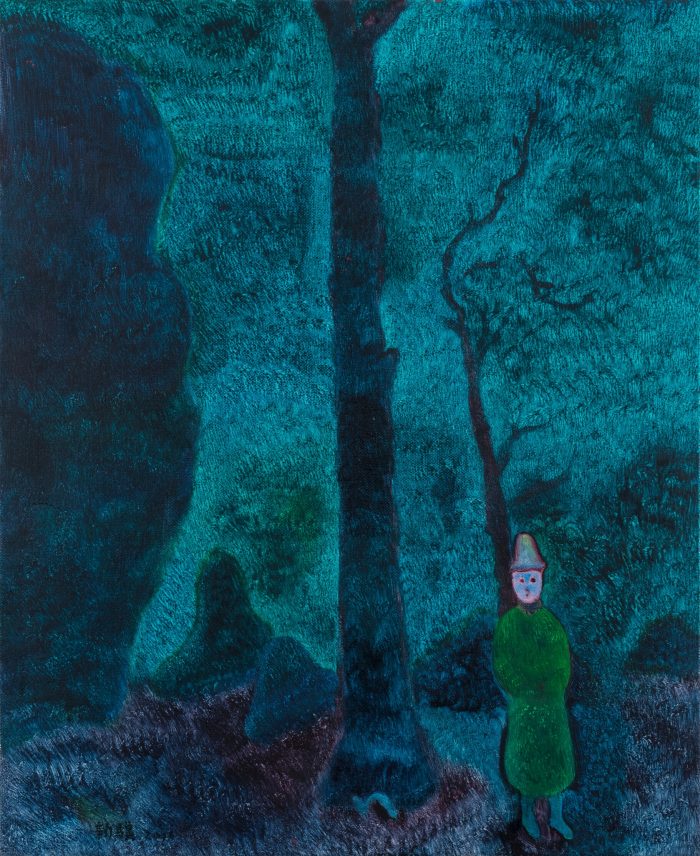After Snow in East Mountain – Shi Xinji New Works
2018.07.08 – 2018.09.08
Press Release
I have been visited Xinji’s studio ten years ago; he was working on a painting series based on “god and spirits”, which mixed with reality, history and mythology to embody something about riotous of mind. Born in Shangqiu Henan, Shi Xinji said he grew as a big fan of swordsmen films, “chivalrous” or “brotherhood” is the keyword to represent his worship. Later while he was studying in department of printmaking of CAFA, he stuck on Chen Laolian in Ming Dynasty, year-print from Zhuxian town in Qing, and “The Classic of Mountains and Seas” as well; thus all those “fairies, spirits, demons and monsters” resided in his mind.
Shi Xinji rarely created printmaking since graduated similarly as most seniors from his department, instead they all turned to oil painting or new media. After a few tried, planar of visual and crush on freely of coloring made no-doubt for him to decide oil painting as his further creation. The persistence of oil painting now becomes his “daily practice”; “Painting is more likely as a daily lesson, I can truly feel my existence only while I’m immersing in studio.” Shi Xinji said.
I should say painting is certainly a “tough job” now. In the current age of Idea Art and new media, painting has doubled its enemies, with facing challenge from either “classic” or any kind of new art style. Well, Shi Xinji’s persistence is more rooted from his inwardness, namely “way of practice”, with includes his own understanding of art. Shi Xinji first realized that painting has its “classicism”, that is, the tradition is extensive and profound enough to generate a reliable value-system of contemporary art; moreover, the individuality of painting is admired by most artists, especially “scarce” in current massive society: it inspired individual to “seek independence” as rogue as itself.
In fact, painting dragged Shi Xinji out of the impetuous reality, but thus near the truth of nature. Shi Xinji loves “countryside” since his schooldays, however those works were more likely as academism sketches; beside, creators frequently stick to what they are seeing by eyes during “sketching”, at the end they could never get out from the “rules” of reality. For now, rather than what he did in school, Shi Xinji treats “countryside” as some kind of life practice; one hand is about “live experiences”, to feel the live deeply, and experiencing the moment of life through by his emotion; other hand is to keep inherence in “real”, “The more simple and sensible, the more deeply touches in heart.” he said. Therefore in his recent series “Landscape” has no more to present the objective restriction and relation between nature imagery; instead, with emotional through by rational, in order to utmost wormed out from any limit of connections, time and spaces, then trying to approach the completeness of art itself.
All of these, are the cause brought Shi Xinji’s language trending to abstract. Abstraction, is the thinking and analyzing process by human independence personality, as well as the way to represent art towards self-conscious and individuality. In his new series, all things that depicted seems come within natural but in fact they are more close to imagination; abstraction also “purified” Shi Xinji’s art, not only remains at the level of language and form, rather about the ablution of idea and idealistic – he seems already found the theory that “unbind thinking” will also “unbind meaning”, therefore the truth of art is to “creating” world instead of “showing” world.
By “showing”, I mean it is a way of creation based on showing reality, although its main structure is built by world of carefully observed reality, although it could also be an anchorage of artist’s feel and hope, but usually is just constrained appearance. By “creating”, it is a purification way of generating reality, the purpose is to create a utopia through imagination, and such utopia is what I called “conception”. Shi Xinji becomes more identified with the cultural values of Chinese tradition, this identify is a creative “turn point” rather a “conservatism”. He pointed out that the aim of “eastern poetic origin” is to make a return of the “conception” through by individual creating.
The way of Shi Xinji used is “start from the little”. Such as his several new works, the images are mostly taken from normal scene, like “Simple Landscape” by Zhao Danian in North-Song Dynasty or “Corner of Scene” by Ma and Xia in South-Song Dynasty; they both emphasized their subjectively cut-off, planted blank, turning of space and the way of color expression. Shi Xinji consciously keeps some kind of randomness to solving the “vitality” and “smartness” in images. Unquestioned, “faint and delicate” is the conception that Shi Xinji always looking for by his “start from the little”.
As said by Wang Guowei, conceptions have difference in size, but sizes never been a judgement of their merit. “Majestic” and “delicate”, the difference is about diversity, such diversities like themes chosen by artist or expressions of eastern concept. Shi Xinji never debating about “large” or “small”, he knows an ancient precept, that is, conception is going within personality – “Higher your state, thus higher your soul.” Therefore, Shi Xinji planted a higher life achievement; first is treats art as “experience”, sharpen his soul and raising his heart; then Shi Xinji willing to reach the state that could combine his selfness into the nature, namely “The Self-Transcending State” of art. Thus, we are hardly found “humanity” in his “Landscape” series, as “seeing object through object” to “a combination of man and nature”. But Shi Xinji is still a painter, from his works we can clearly see how the artist treats painting as the way of expressing feeling and dreams, just Shi Xinji becomes more practical to calms himself, then taking generous and relieved from his life comprehension into his picture with peaceful silence, in order to facing people.
Zhao Li
(Professor of Central Academy of Art, PhD of Art History)



